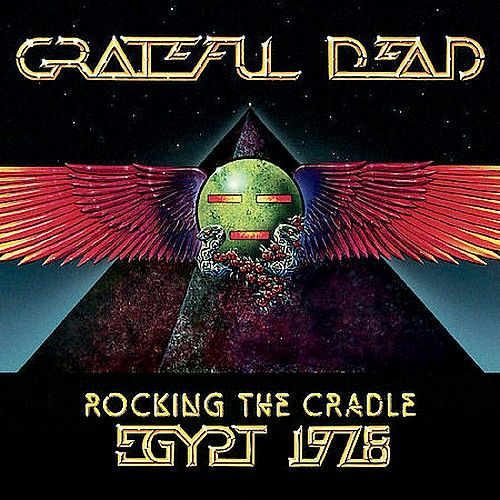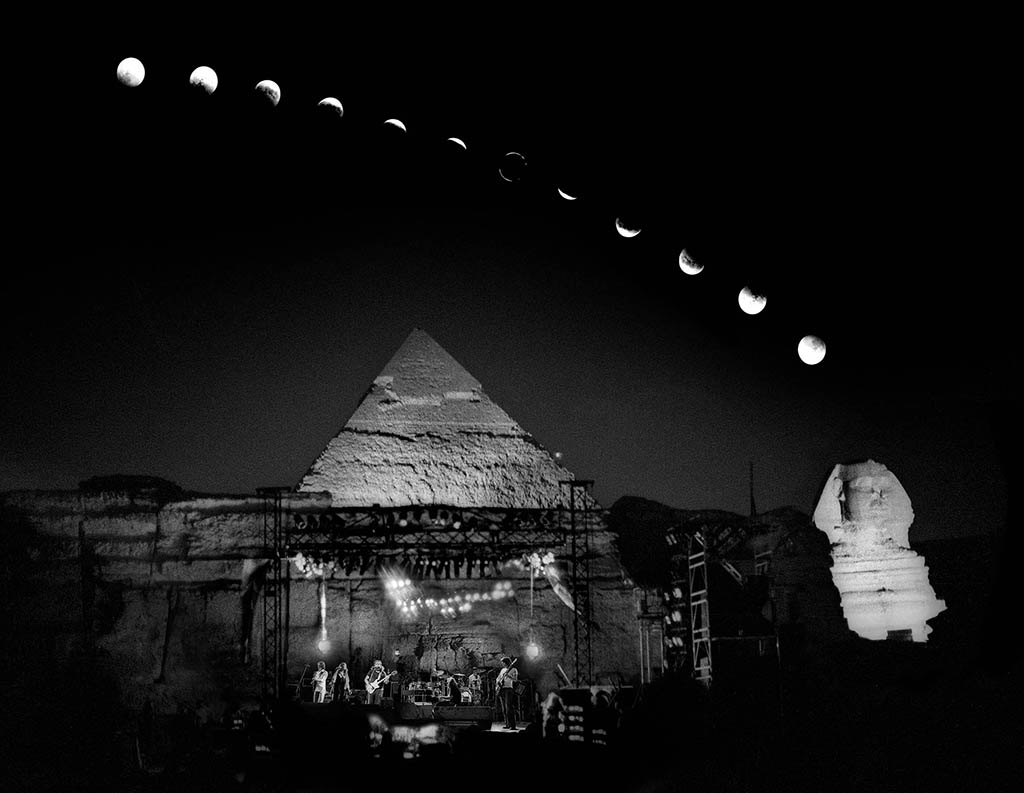Many international artists have performed by the pyramids of Giza over the years, but their experiences cannot be compared to that of The Grateful Dead in September 1978. The American rock group claimed that they were not there just to perform; they were there to record an album, “harness the ancient energy” of the location, and “levitate” the Great Pyramid off the ground.
Although they weren’t able to levitate the Great Pyramid, the trip proved to be a memorable one for the band members, fans, and locals alike.
“Egypt instantly became the biggest, baddest, and most legendary field trip that we took during our entire 30 years as a band,” The Grateful Dead drummer Bill Kreutzmann explained in his book titled Deal: My Three Decades of Drumming, Dreams, and Drugs.
A Pharaonic Curse?
The band’s trip to Egypt can be described in many ways, but “smooth” isn’t one of them. Set to record the album Rocking the Cradle: Egypt 1978 and perform three consecutive nights of shows, the band members continued to encounter one logistical hurdle after another.
To start off, an equipment truck ended up getting stuck in the sand and had to be dragged by camels. The recording gear made the first night’s recording sound odd, with distorted and missing vocals, therefore rendering the entire first night’s work useless. However, the band members persevered and worked with the material available from the second and third concerts to create their album.
The piano tuning technician also backed out at the last minute, so the piano was out of tune for all three performances.

To make matters worse, Kreutzmann cracked a bone in his wrist when he fell off a horse and ended up having to play the drums with only one arm. Bassist John Kahn fell down the stairs of the recording truck and had to take a lot of pain medications.
Put simply, the band members were not in peak form.
The Show and the Locals
The concert is said to have been attended by around a thousand people; these included many devoted The Grateful Dead fans who could afford the long plane ride to Cairo. They were accompanied by, as music photographer Adrian Boot puts it, “a bunch of bemused Bedouins and their goats.”
The first night was also attended by at-the-time first lady Jehan Sadat, who sadly died earlier this year.
The band was accompanied by Nubian Oud player Hamza El Din and other Nubian musicians for a few songs, which turned into a cross-cultural jamming session fusing Egyptian folklore music with American rock tunes.

The proceeds from the ticket sales were donated to Egypt’s Department of Antiquities, an apt choice considering the band’s fascination with ancient artifacts.
“I was one of the first people in the band who was on the trip of playing at places of power. You know, power that’s been preserved from the ancient world. The pyramids are like the obvious number one choice because no matter what anyone thinks they might be, there is definitely some kind of mojo about the pyramids,” said bassist Phil Lesh in The Grateful Dead Reader.
A Cosmic “Trip”
The use of psychedelic drugs like lysergic acid diethylamide, commonly referred to as LSD, was common among the hippie community to which The Grateful Dead’s fandom belonged. Therefore, it made sense that many of the fans decided to sneak in liquid LSD to take during the last concert, which coincided with a full lunar eclipse.
Perhaps attempting to harness the energy of the lunar eclipse, the band believed that the third concert was the night they’d be able to levitate the Great Pyramid. They set up audio equipment in the King’s Chamber, which is a room near the top of the Great Pyramid, to form an echo chamber that would allow the band – with the help of the “ancient gods,” that is – to levitate the grand structure on cue.

“I had always been intrigued by the acoustical properties of the King’s Chamber because of its size and shape, and because it doesn’t conform to the physics formulas Western science has developed for determining the sound qualities of a given room,” the band’s soundman Dan Healy said. He noted that due to the presence of a stone room in the center of the pyramid, with its perfect edges and seams, “notes resonate in ways that defy the laws of physics.”
He believed the attempt to transform the room into an echo chamber failed because it “wasn’t meant to be” and due to technical difficulties, such as a lack of enough cables.
However, the band members always looked back on the trip as a magical endeavor. As founding member Bob Weir puts it: “I got to a point where the head of the Sphinx was lined up with the top of the Great Pyramid, all lit up. All of a sudden, I went to this timeless place. The sounds from the stage – they could have been from any time. It was as if I went into eternity.”






Comments (8)
[…] sound to form a fusion of cultures. He also performed in a cross-cultural jamming session during the 1978 Grateful Dead concert in Egypt, which he helped arrange. Unfortunately, according to one of the concert’s attendees who […]
[…] Alberto Mazcuñán en Fm Rock relató que la idea de tocar en las Pirámides fue del bajista Phil Lesh. Él inició las relaciones con el gobierno egipcio y acordó donar todas las ganancias de las entradas al departamento de conservación de las antigüedades del país. “Fui una de las primeras personas de la banda que estaba en el viaje de tocar en lugares de poder. Ya sabes, el poder que se ha preservado del mundo antiguo. Las pirámides son como la opción número uno obvia”, dijo Lesh. (Fuente) […]